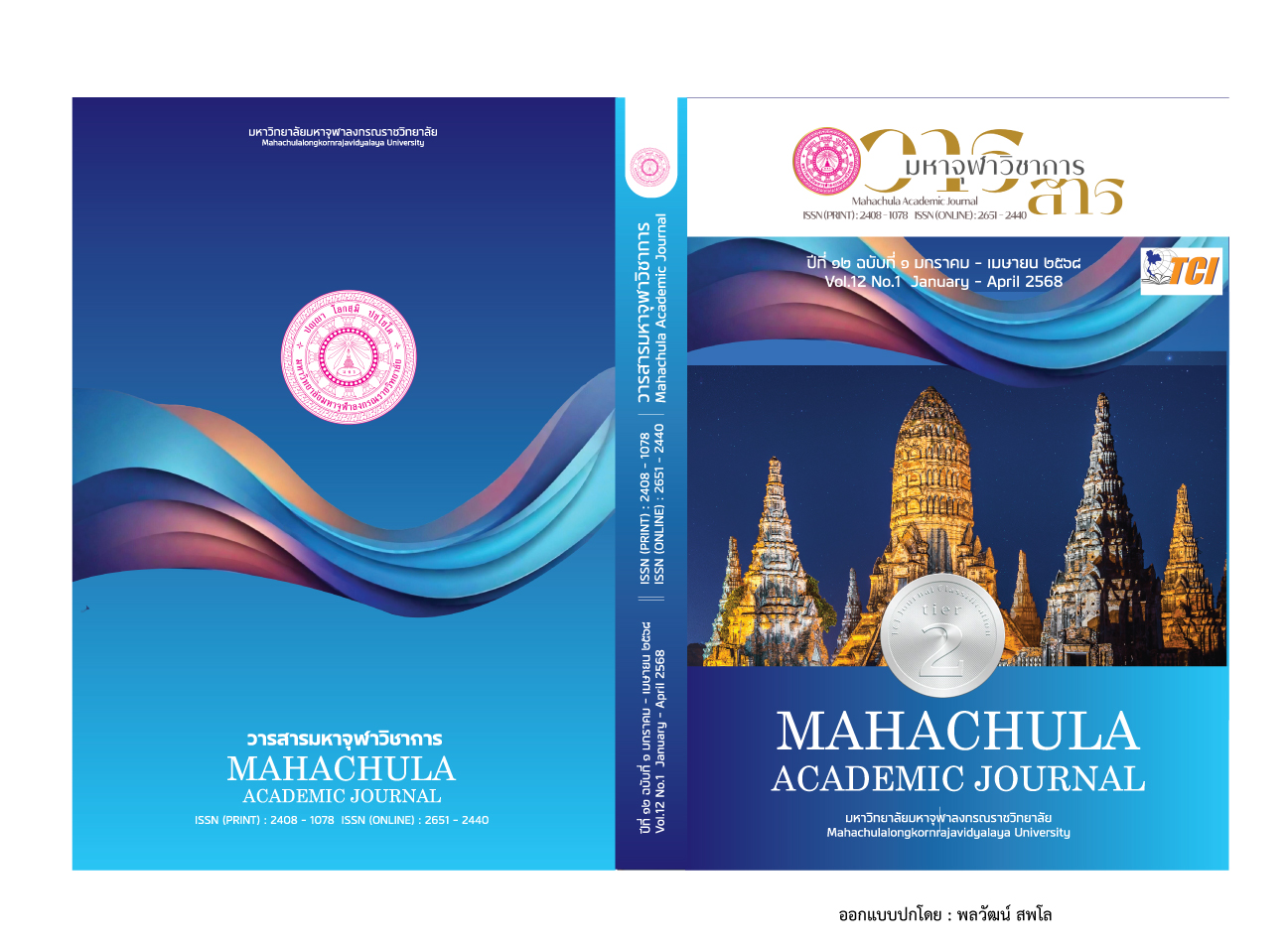Interpretation of 'Temporary Nibbana' from the teachings of Buddhadasa Bhikkhu
Main Article Content
Abstract
This article aims to investigate the interpretation of "temporary Nibbana" as conceptualized by Buddhadasa Bhikkhu, in comparison with the traditional Buddhist explanation of Nibbana as described in the Tipitaka and its commentaries. The findings reveal that Nibbana, in its orthodox Buddhist sense, signifies the complete cessation of defilements, attainable solely through lokuttara-dhamma (supramundane realization), and is recognized as the ultimate goal of Buddhist practice. In contrast, Buddhadasa Bhikkhu's "temporary Nibbana" proposes that even ordinary practitioners (puthujjana) can momentarily experience Nibbana during states when the mind is temporarily free from defilements. This interpretation reflects an idiomatic approach to the communication of dhamma, facilitating a broader understanding and making the concept of Nibbana more approachable and relevant in modern contexts. Additionally, "temporary Nibbana" aligns with the notion of nirodha in the Tipitaka, particularly vikkhambhana-nirodha (cessation by suppression) and tadanga-nirodha (momentary cessation). These states represent the temporary suppression of defilements, achievable within mundane practice, albeit not equivalent to ultimate Nibbana. The article underscores that Buddhadasa Bhikkhu's interpretation seeks to make Buddhist teachings more accessible and meaningful to daily life, offering lay practitioners an opportunity to experience the tranquility of Nibbana even in transient moments during their practice.
Article Details

This work is licensed under a Creative Commons Attribution-NonCommercial-NoDerivatives 4.0 International License.
References
กีรติ บุญเจือ. ศาสนศาสตร์เบื้องต้น. พิมพ์ครั้งที่ ๔. กรุงเทพมหานคร: บริษัท ไทยวัฒนาพานิช จํากัด, ๒๕๔๑.
ธรรมทานมูลนิธิ. นิพพานสำหรับทุกคน โดย พุทธทาสภิกขุ. กรุงเทพมหานคร: สำนักพิมพ์สุขภาพใจ, ๒๕๔๕.
พระพรหมคุณาภรณ์ (ป. อ. ปยุตฺโต). พระพุทธเจ้าตรัสรู้อะไร. กรุงเทพมหานคร: คิงออฟแอนด์เวอร์ไทซิ่ง.
พุทธทาสภิกขุ. นิพพาน (ความน่าอัศจรรย์บางประการของพระนิพพาน). กรุงเทพมหานคร: ธรรมสภา, ๒๕๕๕.
มหาจุฬาลงกรณราชวิทยาลัย. พระไตรปิฎกภาษาบาลี ฉบับมหาจุฬาเตปิฏกํ ๒๕๐๐. กรุงเทพมหานคร: โรงพิมพ์มหาจุฬาลงกรณราชวิทยาลัย, ๒๕๓๕.
มหาจุฬาลงกรณราชวิทยาลัย. พระไตรปิฎกภาษาไทย ฉบับมหาจุฬาลงกรณราชวิทยาลัย. กรุงเทพมหานคร: โรงพิมพ์มหาจุฬาลงกรณราชวิทยาลัย, ๒๕๓๙.
โมคคัลลานเถระ. คัมภีร์อภิธานวรรณนา. พระมหาสมปอง มุทิโต แปลและเรียบเรียง. กรุงเทพมหานคร: ธรรมสภา, ๒๕๕๐.
สมเด็จพระพุฒาจารย์ (อาจ อาสภมหาเถระ). คัมภีร์วิสุทธิมรรค (แปล) รจนาโดยพระพุทธโฆสเถระ. พิมพ์ครั้งที่ ๑๐. กรุงเทพมหานคร: ธนาเพลส, ๒๕๕๕.
A. Sharma. Classical Hindu Thought: An Introduction. Oxford University Press, 2000.
Bernstein, R. J. Beyond Objectivism and Relativism. Philadephia: University of Pennsyl- vania Press, 1983.
PANTIP. “นิพพานชั่วคราว คือคำสอนที่พราหมณ์ปลอมปนเข้ามาในศาสนาพุทธหรือไม่”. [ออนไลน์]. แหล่งที่มา: https://pantip.com/topic/34116809 [๒๐ ตุลาคม ๒๕๖๗].

